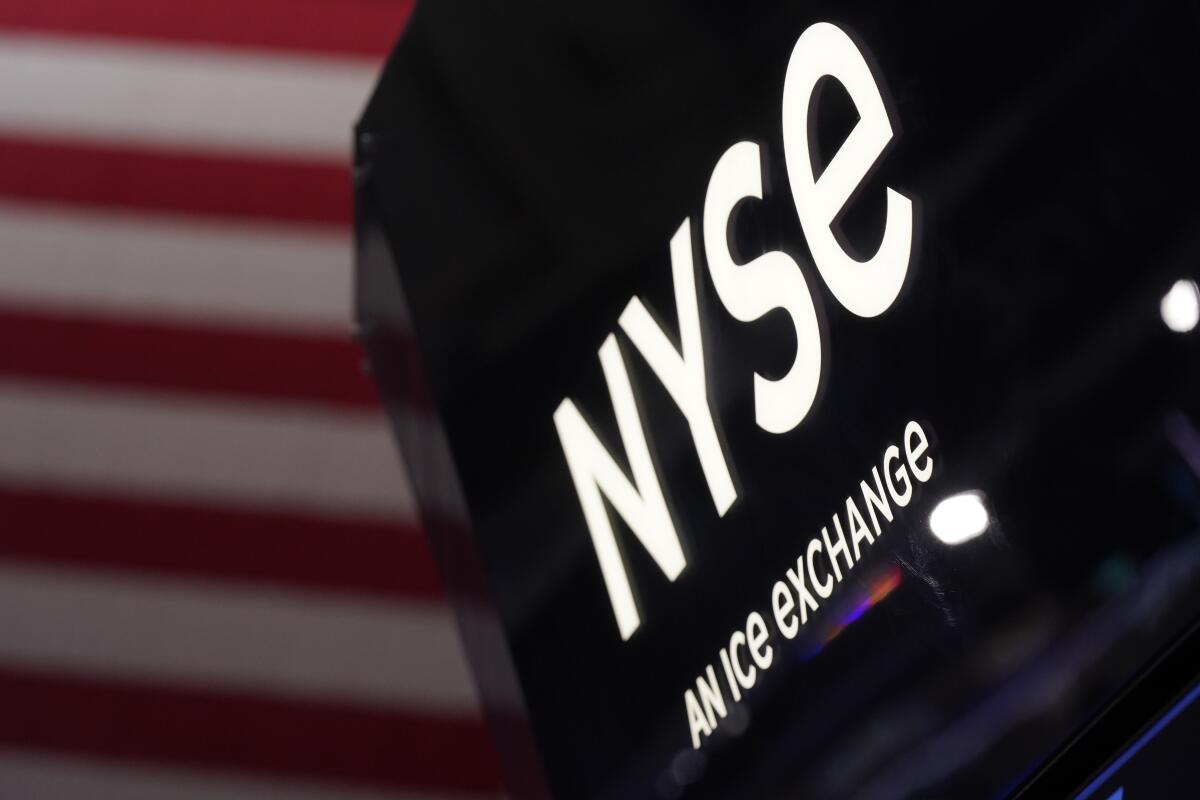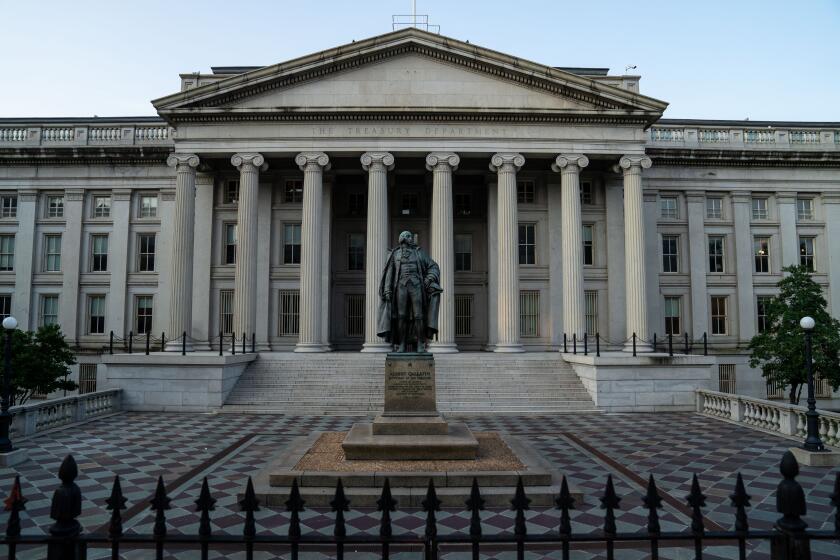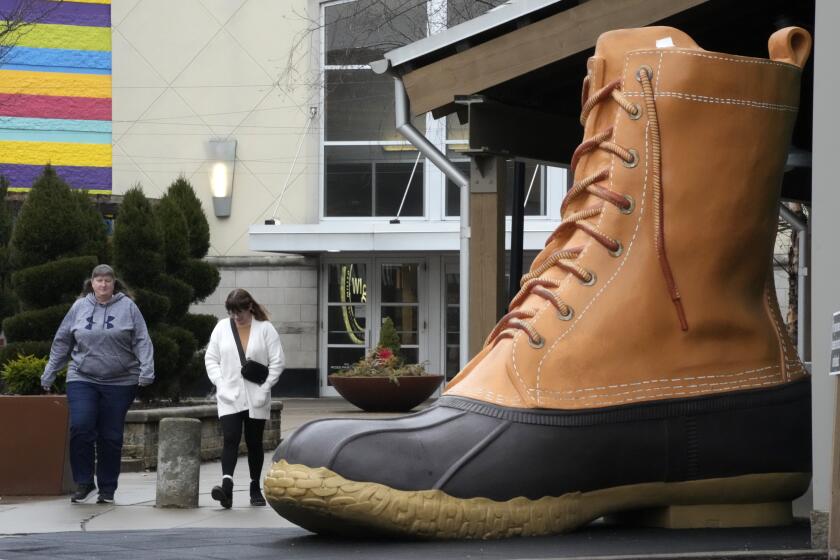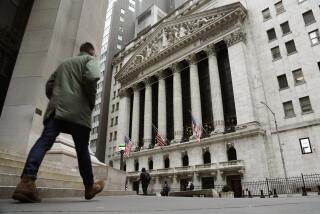Another disappointing inflation report thumps Wall Street

- Share via
Wall Street tumbled Thursday, and stocks fell by the most in four weeks following more evidence that high inflation is staying stickier than expected.
The Standard & Poor’s 500 index dropped 1.4% after a report said inflation at the wholesale level slowed by less last month than economists had forecast. It echoed a report on prices at the consumer level from earlier this week that suggested inflation isn’t cooling as quickly and as smoothly as hoped.
The Dow Jones industrial average lost 1.3%, while the Nasdaq composite dropped 1.8%.
Stocks have been churning recently as worries about inflation joust against data suggesting that the economy remains more resilient than many feared. The worry has been that persistently high inflation will push the Federal Reserve to continue raising interest rates. Higher rates can drive down inflation but also drag on investment prices and raise the risk of a recession.
Such fears have been most clear in the bond market, where yields have leaped this month as traders boost their bets for how high the Fed will take interest rates.
The updated 10-year Budget and Economic Outlook outlined stark expectations for the coming year as high interest rates and inflation continue.
The yield on the two-year Treasury, which tends to track expectations for Fed action, jumped to 4.67% from less than 4.60% before the inflation report’s release and from less than 4.10% earlier this month. It’s near its highest level since November, when the yield reached levels last seen in 2007 before the Great Recession.
Thursday’s inflation report showed that prices at the wholesale level were 6% higher last month than a year earlier. Although that was a slowdown from December’s rate, it was worse than what economists expected. Perhaps more concerning was that inflation accelerated in January on a month-to-month basis even after stripping out prices for food, energy and other layers.
The inflation report thudded onto Wall Street along with a batch of other data painting a mixed picture of the economy.
Fewer workers applied for jobless benefits last week than expected, a sign that layoffs remain low across the economy. That’s good news for workers and another signal of strength for the job market, but the Fed worries it could also add upward pressure on inflation.
America’s consumers rebounded last month from a weak holiday shopping season by boosting their spending at stores and restaurants at the fastest pace in almost two years.
Other reports showed a measure of manufacturing activity in the mid-Atlantic region plunged this month, while home builders broke ground on fewer homes last month than economists expected.
Altogether, the reports cast some doubt on Wall Street’s hopes that the Federal Reserve could slow the economy just enough to stamp out inflation without creating a recession. Hopes for a “soft landing” for the economy nevertheless remain firmly in the market, with the S&P 500 still up 6.5% since the start of the year.
“I would go further and say ‘no landing,’” said Nate Thooft, senior portfolio manager at Manulife Investment Management. “It’s almost as if there’s no softness perceived, or it’s so minimal that it’s not really viewed as recessionary at all.”
Those hopes have helped the stock market remain relatively resilient even as the bond market moves sharply on expectations for a firmer Fed.
Thooft said there’s a chance both markets could ultimately be proved correct, that the Fed could keep rates higher for longer while the economy avoids a recession, but he’s skeptical. He thinks what’s more likely is a shallow recession or slowdown in growth, but one that lasts longer than markets may be prepared for.
Recently, he was thinking weakness in the economy could last just a few months. But his expectations for a “higher-for-longer” Fed have him now thinking it could last as long as a year.
Strong recent reports on inflation and the job market have forced Wall Street to align its forecasts for rates closer to the Fed’s. Earlier this year, there was a wide disconnect between them. Investors were betting that the Fed wouldn’t go as high as it was saying, while also holding out significant hopes for a cut to rates in the latter part of the year.
The fear now is that if inflation proves more persistent than expected, the Fed will have to go beyond what it’s been prepping the market for.
Loretta Mester, president of the Federal Reserve Bank of Cleveland, said in a speech Thursday that she saw “a compelling economic case” at the Fed’s meeting this month to raise rates by double what it ended up doing.
Big technology and high-growth stocks led the overall market lower Thursday, in part because they’re seen as some of the most vulnerable to higher interest rates. In earlier years, their stocks shot higher in part because of record-low interest rates.
A 2.7% fall for Microsoft, 3.3% drop for Nvidia and 4.7% slide for Tesla were some of the heaviest weights on the S&P 500.
All told, the index fell 57.19 points to 4,090.41. The Dow fell 431.20 points to 33,696.85, and the Nasdaq dropped 214.76 points to 11,855.83.
AP writers Yuri Kageyama and Matt Ott contributed to this report.
More to Read
Inside the business of entertainment
The Wide Shot brings you news, analysis and insights on everything from streaming wars to production — and what it all means for the future.
You may occasionally receive promotional content from the Los Angeles Times.












